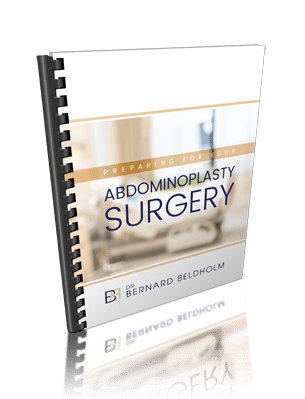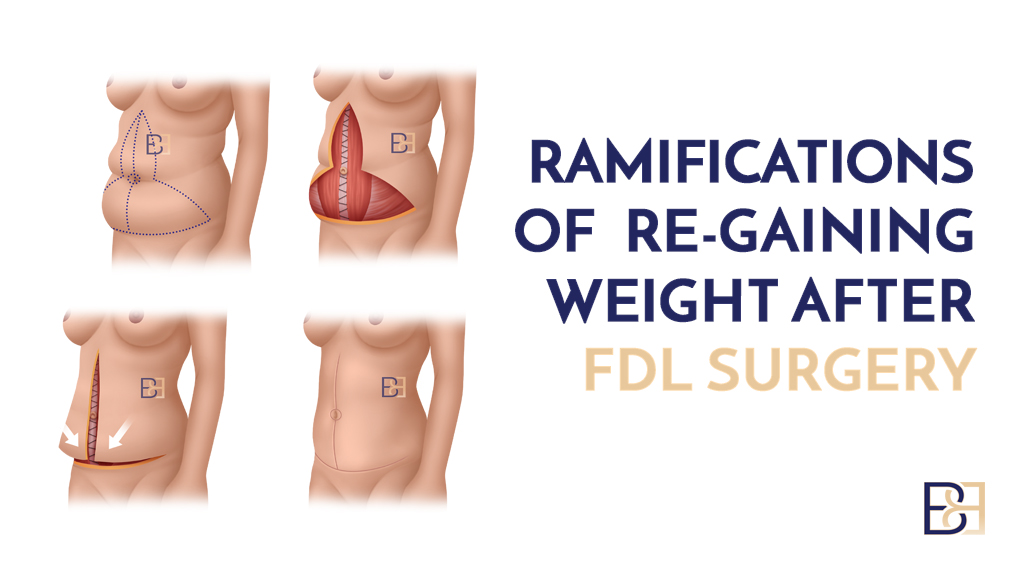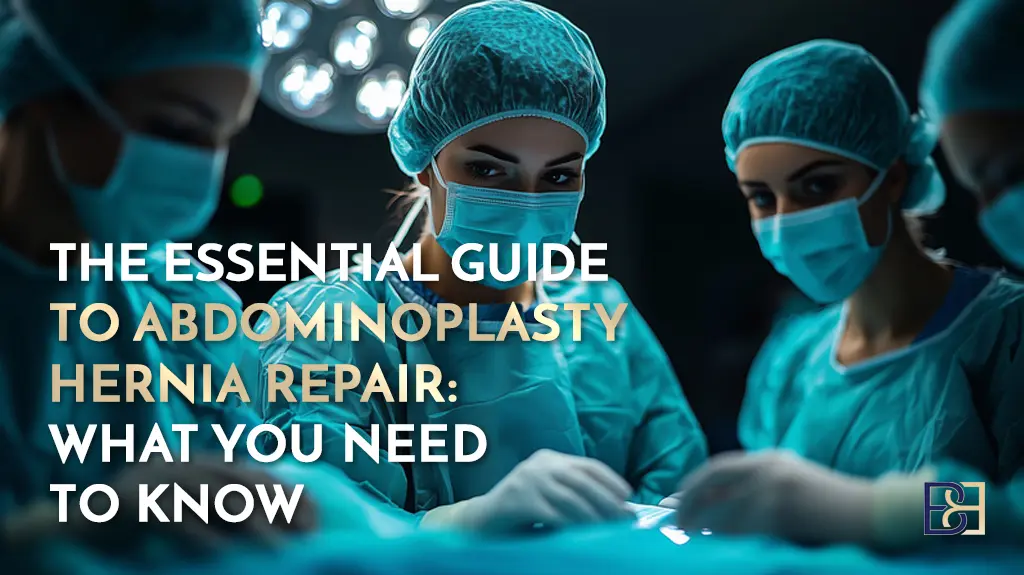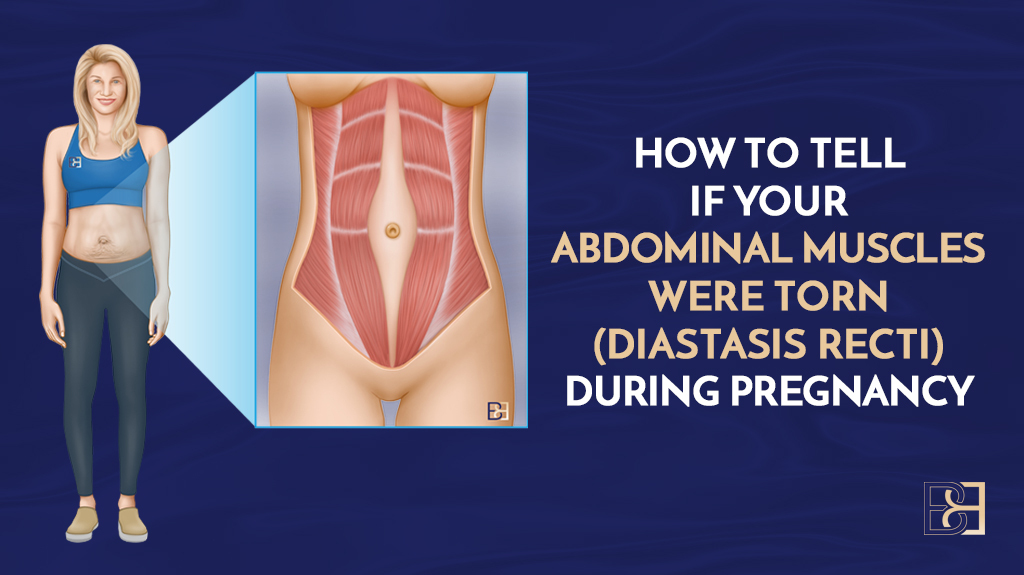Abdominoplasty) procedures carry risks from seroma and pain to blood clots and haematoma. Development of these complications varies based on several factors, including the type of procedure performed and the patient’s profile, medical history, and lifestyle.

Book your appointment online now
If you’re considering abdominoplasty, you’re probably weighing feelings of excitement against apprehension. I get it—this is a big decision with a lot to consider. Abdominoplasty comes with multiple benefits as well as some risks and complications.
Being your FRACS surgeon, I am responsible for minimising and eliminating these risks to ensure your procedure goes well and you have a smooth recovery period. Because risks vary, I have grouped them in order of severity, from the most serious to the less concerning.
This article will cover everything from infection and scarring to blood clots and nerve damage to give you a clear picture of what to expect. Let’s get started.
Serious Complications
We will start with the most severe tummy tuck (abdominoplasty) risks and complications that might result from your procedure. These include:
Heart Problems

The riskiest situation resulting from an abdominoplasty is when a patient develops heart issues, such as a heart attack. Heart attacks during cosmetic surgery are a possibility since the general anaesthesia administered affects your cardiovascular system. However, as your surgeon, I will oversee modern anaesthetic techniques to reduce this risk.
Patients with underlying heart conditions are more likely to develop such problems. Furthermore, the stress of surgery itself can exacerbate pre-existing conditions, increasing the likelihood of cardiovascular complications. I encourage my patients to disclose their full medical history during our consultation to avoid these serious risks.
Anaesthesia

Anaesthesia affects the cardiovascular system and lungs during plastic surgery, which can lead to heart problems and small lung area collapse in rare instances. This can increase the risk of developing a chest infection.
The flip side is that such conditions, even though severe, are manageable, treatable, and rare.
Blood Clot
A blood clot can be a serious complication of abdominoplasty surgeries. While the occurrence of blood clots during or after an abdominoplasty is relatively rare, it is a risk that should not be overlooked.
While clots that develop in the abdomen or other body parts, such as the legs, can be painful and cause swelling, when a part of the clot breaks and finds its way to the lungs, it can be very serious.
Deep Vein Thrombosis (DVT)

Patients with a history of deep vein thrombosis (DVT) or other circulatory issues may be at an increased risk of developing this complication.
During our consultative session, we will discuss how to combat clots in case they develop. I’ll assess your general health and medical history to determine the best surgical approach. I will discuss measures like compression garments, blood-thinning medications, and early mobilisation after the procedure to counter this complication.
Download our short guide: “11 Important abdominoplasty techniques that you need to know about”
Manageable Complications
Moving forward, let’s discuss potential complications that are less severe than the previously mentioned. Even though these issues are not as critical, they still require careful consideration.
Allergic Reactions
Your allergies are among the many things we discuss during our consultative session. I invite you to list all reactions you’re aware of to help me determine which surgical procedures are ideal and which treatment options to choose.
Most cases of allergic reactions are mild and easily manageable, but can range from a mild skin irritation to more severe responses.
It’s important to let me know about any and all allergies you may have, particularly to medications, latex, or anaesthesia so we can make any adjustments ahead of time as well as inform the anaesthetist.
Seroma
Seroma is a condition that involves the buildup of fluid under the skin’s surface. There are several methods to reduce the risk of getting seromas. Drains can be used to remove the fluid. In my drainless abdominoplasty procedures, I use plication sutures and tissue glue to reduce the chance of a seroma. If seromas are caught early and drained, usually in an office procedure, they usually resolve. If left untreated, they can cause significant issues.
Haematoma
Haematoma is a condition in which blood builds up. It can be painful and requires the immediate attention of a FRACS surgeon. Failure to treat a haematoma increases the risk of infection and can lead to extensive scarring. This condition occurs when a blood vessel opens up after surgery. If the blood vessel stops bleeding and the haematoma is small, it usually resolves with no further intervention. If the bleeding does not stop or the haematoma is large, you will need further surgery, which can be an emergency situation.
Other Potential Problems Following Abdominoplasty
Here, we will focus on conditions that vary based on the patient’s profile. You may or may not experience the following potential problems after your tummy tuck (abdominoplasty) procedure.
Abdominoplasty Scar Formation

Like any other major surgery, tummy tuck (abdominoplasty) procedures, including a mini tummy tuck (abdominoplasty), leave a scar.
Mini abdominoplasty procedures require a small incision, which forms a small scar. Extensive options, such as full abdominoplasty, extended abdominoplasty, and Fleur-De-lis (FDL) result in extensive and more visible scars.
During our consultation, we’ll discuss the ideal tummy tuck (abdominoplasty) scar placement for you, based on my over 15 years of offering body contouring services. For instance, if your procedure allows, I will make an incision line along your bikini line, making it possible to cover the scar when wearing your undergarments and swimsuits.
For a deeper dive into preparing for our consultation, see my article Getting Ready for An Abdominoplasty Consultation.
Keloid Scars

Keloid scars, which are overgrown tissue resulting from the body overproducing collagen to facilitate wound healing following surgery, are characterised by a raised, irregular, shiny, and darker appearance than the surrounding skin.
Though there are various effective strategies to remedy the situation should the need arise, my surgical techniques generally work to prevent the development of this scar from forming in the first place.
Hypertrophic Scars
A hypertrophic scar is another thick, raised scar that can occur after a surgical procedure. This is a common complication of abdominoplasty surgery and can be managed with medication, injections, Laser Genesis, and corrective surgery.

Infection of the Wound
Whenever a surgeon cuts into the skin during a surgical procedure, there is always a chance of a wound infection. The infections following an abdominoplasty vary, with their severity depending on factors such as the patient’s profile, lifestyle, previous abdominal surgery, and medical history.
In most cases, infections are not life-threatening but can delay wound healing. The best way to prevent these infections is to follow my post-operative instructions to the letter and care for your delicate abdominal wound. I will provide a post-surgery guide that explains the correct method for ensuring the incision stays dry, which activities to avoid that could hinder the wound healing process, and how to take the prescribed antibiotics correctly. If these practices are followed, the risk of infection is reduced tremendously.
Surgical Drain Infections
The use of surgical drains will depend on the type of surgery and the patient. In the event that I deem the need for surgical drains, the area surrounding such drains must remain dry. Lack of proper drainage around the surgical site can lead to infection and prolong wound healing.
Removing the drainage tubes too early may result in fluid collections such as a seroma, while removing them too late can lead to discomfort and potential infections.
Another study emphasizes on the dissadvantage of surgical drains. “[t]he primary purpose of inserting drain after any operation is to avoid accumulation of collecting fluid. The collected fluid gets lined by a pseudo capsule and is termed seroma. The fluid also increases tissue tension and prevents wound healing. The source of seroma in abdominoplasty is residual infiltrate as well as damaged fat and fluid secreted in the third space. The third space fluid continues to form in post-operative period also.
The disadvantages of drains have been widely documented as discomfort, pain, difficulty in mobilisation and blockage (which defeats their purpose). Drains may cause irritation of tissues and add to seroma formation, as noted by Koller and Hintringer.[[1]]”
Pain
You will experience some pain and discomfort regardless of the type of abdominoplasty procedure performed. As your surgeon, I’ll prescribe pain medication to help you manage the discomfort immediately following surgery and during the first days of recovery.
As your incision wound heals, your pain levels will begin decreasing. However, a sudden sharp pain in your abdomen can indicate that you have exerted excessive pressure on the delicate region.
Activities such as exercising and lifting heavy objects can cause sharp or more severe pain and lead to further complications, which is why it is crucial you follow my after-care guidelines.
Sleep Disruption
Sleep disruption is expected during the first few nights after surgery.
To ensure a good night’s sleep, I recommend lying on your back with your upper body slightly elevated and a pillow beneath your knees. This position reduces pressure in your abdominal area when you sleep, reducing the chances of sleep disruption.
Furthermore, this promotes blood circulation and reduces the risk of developing complications. I will show you how to assume this position and how to place the pillow under your knees during our consultative session.
Hygienic Issues
Basic hygiene practices can also increase or decrease the risk of developing post-surgical complications. I advise you to follow basic hygiene measures to avoid exposing the incision wound to infection.
However, you should prioritise the guidelines I’ll provide such as avoiding showering for the first few days after surgery and not submerging the incision site in water. Remember, the PICO dressing cannot get wet so it’s best to take bird baths until the dressing is replaced with surgical tape dressing.
For more details, see my related article, Advanced Abdominoplasty (Tummy Tuck) Techniques: PICO Wound Therapy for Reduced Complications and Enhanced Healing.

Preventing Complications
The best route for preventing complications involves a two-pronged approach. I’ll use effective surgical techniques that effectively reduce such complications from occurring. And on your end, you should adhere to my post-operation guide. Together, these practices will help ensure your tummy tuck (abdominoplasty) wound heals effectively and as intended.
Below are some of my most crucial recommendations.
Quit Smoking
I insist that you avoid smoking six weeks before and after your surgery. Smoking leads to poor wound healing, which increases the risks of developing the complications discussed above.
A study by PubMed shows that “[t]he harmful effects of cigarette smoking on wound healing have been reported in multiple studies. A higher incidence of wound complications associated with smoking include prolonged wound healing times, dehiscence, tissue flap necrosis, anastomotic leakage, decreased wound tensile strength, and infection. Conversely, smoking cessation has been associated with a reduction in incisional wound infections and other wound healing complication rates. In fact, many plastic surgeons are hesitant to perform certain elective or aesthetic surgeries on individuals who reject smoking cessation advice.”
Diet
A balanced diet helps the body recover from the invasive surgery. Protein is crucial, as it helps maintain and build abdominal muscles and tissues, while carbohydrates give you energy.
Hydration
Because water is a major component of the blood, it is essential following abdominoplasty surgery. Dehydration leads to low blood volume, reducing the oxygen and nutrient content in the blood. Drinking enough water promotes the proper transportation of essential nutrients to the damaged tissues and facilitates wound healing.
Rest
Give your body time to heal and focus its attention on the delicate incision wound by getting plenty of rest. Furthermore, the more you rest, the less likely you are to strain the wound and interfere with the dressings.
Take it Slow
Do not be in a hurry to resume your usual activities. Your body has undergone major surgery and needs time to heal the affected tissues. Ensure that you follow the returning-to-work plan I’ll provide to prevent further complications. Learn more about return-to-work timelines in my article: Dr. Beldholm Gets Down to Business: Comprehensive Guide for Returning to Work After Abdominoplasty Surgery.
Keep Moving
Take short walks around the house as a way of exercising as you regain your strength and heal. These walks facilitate blood flow to the incision site, promoting wound healing. Furthermore, proper blood circulation reduces the risk of developing blood clots.
Follow-up Appointments
Follow-up appointments are crucial as they allow me to assess your condition and progress. During these appointments, I will examine your lower abdomen and upper abdomen to detect any issues you might have missed. Also, the follow-up appointment is an excellent time to revisit your recovery program. Based on your progress, we’ll make the required adjustments and estimate when you can resume normal activities, return to work, or begin exercising.
Follow Aftercare Instructions
As you head home after your procedure, take good care of yourself by following all of my aftercare instructions. If you notice any complications or unusual developments, do not hesitate to call me.

Dr. Bernard’s Conclusion
As I place great value on transparency, I believe it’s important for my patients to understand the potential risks and complications associated with tummy tuck (abdominoplasty) procedures.
Should any of the aforementioned complications arise, my team and I will be readily available to assist you with treatments and advice to reduce the risk of worsening the condition and guide you back onto your path to recovery.
Book your appointment online now
References
- Palmerola, R., Hartman, C., Theckumparampil, N., Mukkamala, A., Fishbein, J., Schwartz, M., & Kavoussi, L. R. (2016). Surgical Complications and Their Repercussions. Journal of endourology, 30 Suppl 1, S2–S7.
- Dharap, S. B., Barbaniya, P., & Navgale, S. (2022). Incidence and Risk Factors of Postoperative Complications in General Surgery Patients. Cureus, 14(11), e30975.
- Zambouri A. (2007). Preoperative evaluation and preparation for anaesthesia and surgery. Hippokratia, 11(1), 13–21.
- Ellis P. (2018). The impact of smoking on wound healing: the role of the nurse. British journal of nursing (Mark Allen Publishing), 27(6), S10–S14.
- Fan Chiang, Y. H., Lee, Y. W., Lam, F., Liao, C. C., Chang, C. C., & Lin, C. S. (2023). Smoking increases the risk of postoperative wound complications: A propensity score-matched cohort study. International wound journal, 20(2), 391–402.
- Jones, J. K., & Triplett, R. G. (1992). The relationship of cigarette smoking to impaired intraoral wound healing: a review of evidence and implications for patient care. Journal of oral and maxillofacial surgery : official journal of the American Association of Oral and Maxillofacial Surgeons, 50(3), 237–240.
- Liu, D., Zhu, L., & Yang, C. (2022). The effect of preoperative smoking and smoke cessation on wound healing and infection in post-surgery subjects: A meta-analysis. International wound journal, 19(8), 2101–2106.
- Kazzam, M. E., & Ng, P. (2023). Postoperative Seroma Management. In StatPearls. StatPearls Publishing.
- Papanikolaou, A., Minger, E., Pais, M. A., Constantinescu, M., Olariu, R., Grobbelaar, A., & Lese, I. (2022). Management of Postoperative Seroma: Recommendations Based on a 12-Year Retrospective Study. Journal of clinical medicine, 11(17), 5062.
- Vidal, P., Berner, J. E., & Will, P. A. (2017). Managing Complications in Abdominoplasty: A Literature Review. Archives of plastic surgery, 44(5), 457–468.
- Winocour, J., Gupta, V., Ramirez, J. R., Shack, R. B., Grotting, J. C., & Higdon, K. K. (2015). Abdominoplasty: Risk Factors, Complication Rates, and Safety of Combined Procedures. Plastic and reconstructive surgery, 136(5), 597e–606e.
- Grieco, M., Grignaffini, E., Simonacci, F., & Raposio, E. (2015). Analysis of Complications in Post Bariatric Abdominoplasty: Our Experience. Plastic surgery international, 2015, 209173.




